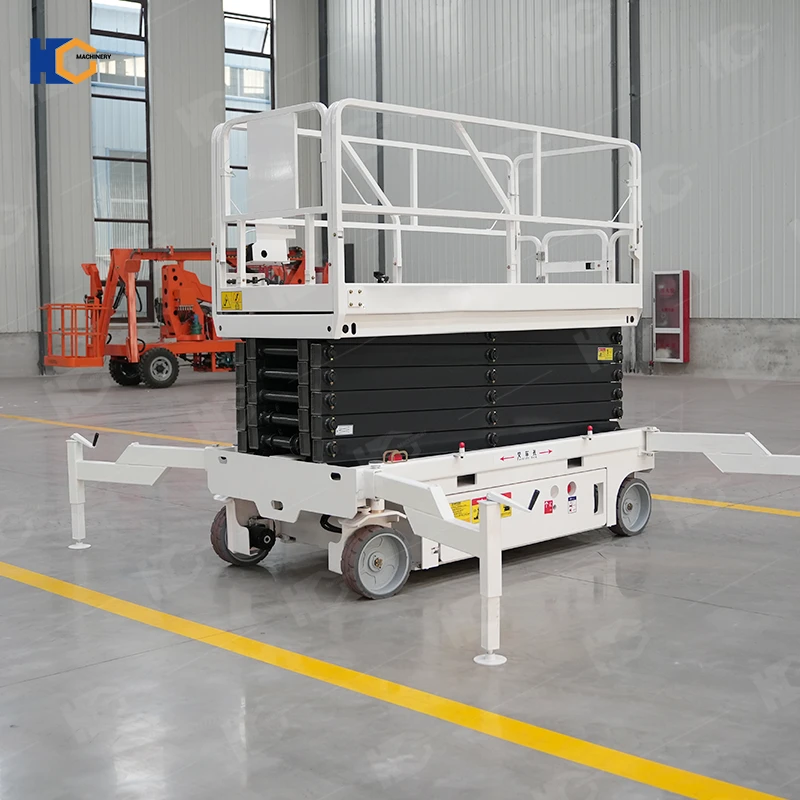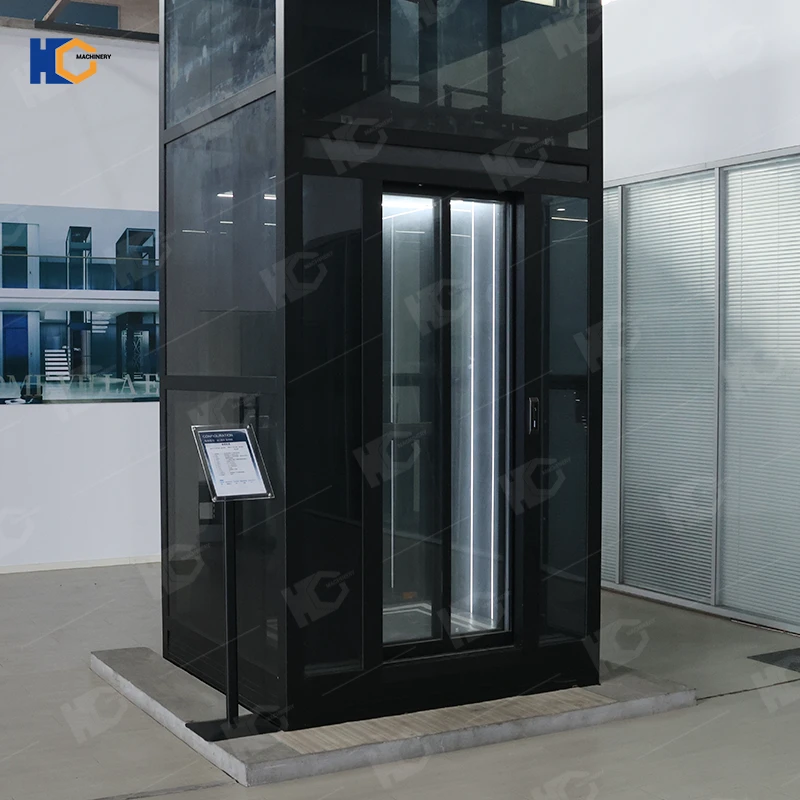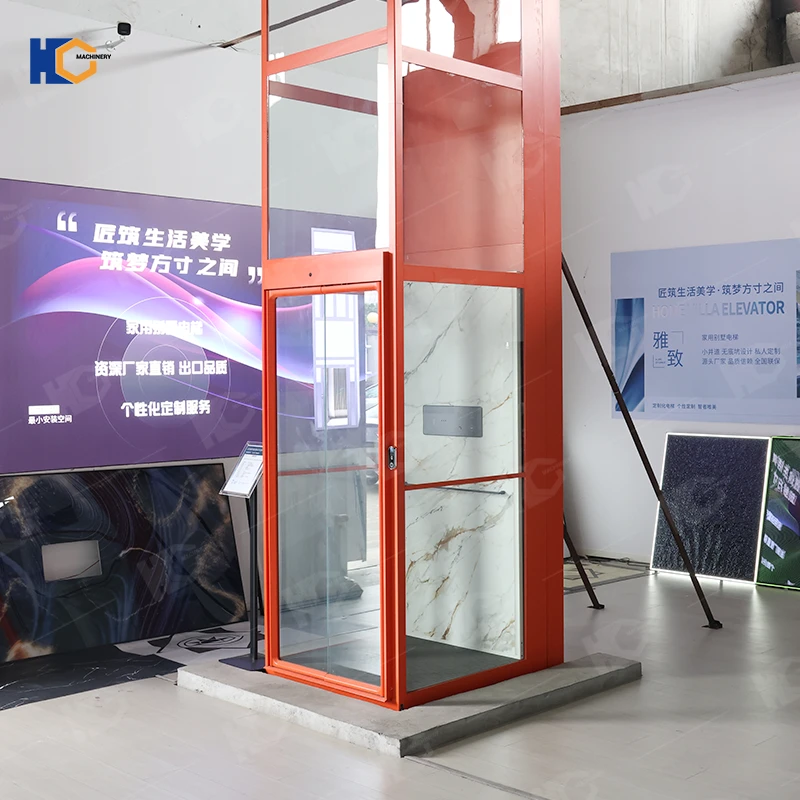While both serve to elevate workers and materials, their designs, capabilities, and applications differ significantly. This article explores every aspect of these two platforms—from design principles to operational costs—providing a detailed guide to help professionals choose the right equipment for their needs.
1. Design and Mechanism: Understanding the Core Differences
The fundamental distinction between manlifts and boom lifts lies in their mechanical structures and mobility.
Manlifts (Vertical Mast Lifts/Scissor Lifts)
Design: Manlifts use a scissor-like mechanism to vertically lift a platform. A series of interlocking metal arms (the "scissor arms") expand upward, creating a stable base for the platform.
Mobility: Typically mounted on wheeled bases, they are designed for indoor use or confined spaces. Most are electric-powered, making them quiet and emission-free.
Platform Size: Generally smaller, with platforms ranging from 6×6 feet to 8×8 feet.
Height Limitations: Ideal for low-to-medium elevations, reaching up to 20–30 feet.
Boom Lifts (Telescopic/Articulating Booms)
Design: Boom lifts employ a hydraulic telescoping or hinged boom arm that extends horizontally and vertically. The arm can pivot (articulating booms) or extend straight out (telescopic booms).
Mobility: Often mounted on trailers or trucks for outdoor use, though self-propelled models exist. Diesel engines are common, though electric hybrids are emerging.
Platform Size: Larger platforms (8×8 feet to 10×10 feet) with greater weight capacity (up to 750 lbs).
Height and Reach: Capable of reaching 50–150+ feet, with some models offering 360-degree rotation.
Key Takeaway: Manlifts prioritize vertical lift in tight spaces, while boom lifts emphasize horizontal and angular reach for elevated, hard-to-access areas.
954452.webp)
2. Applications: Where Each Excels
The choice between a manlift and a boom lift often hinges on the task and environment.
Manlifts: Ideal for Indoor and Confined Spaces
Common Uses:
Warehousing: Stocking shelves, installing lighting, or repairing overhead systems.
Retail: Painting ceilings, mounting fixtures in stores.
Indoor Maintenance: HVAC repairs, electrical work in offices or factories.
Advantages:
Stability in tight spaces.
Minimal noise and emissions for indoor compliance.
Simpler controls for quick setup.
Boom Lifts: Outdoor and High-Reach Applications
Common Uses:
Construction: Accessing rooftops, scaffolding, or high-rise building facades.
Agriculture: Pruning trees, harvesting orchards.
Infrastructure: Power line maintenance, highway signage installation.
Event Setup: Hanging lights or decorations at stadiums.
Advantages:
Ability to work over obstacles (e.g., transformers, trees).
Extended reach for multi-story projects.
Versatility in angled or tilted positions.
Case Example:
A warehouse manager would opt for a scissor lift to reorganize inventory, while a utility company would use a boom lift to repair a high-voltage power line strung between poles.
889474.webp)
3. Safety Considerations and Training Requirements
Safety protocols and training needs vary based on the equipment’s complexity and operational risks.
Manlifts
Risks:
Overloading causing instability.
Tip-overs on uneven surfaces.
Sudden movements near overhead obstructions.
Training:
Basic certification (e.g., OSHA 10-hour construction safety).
Emphasis on load limits, indoor navigation, and obstacle avoidance.
Boom Lifts
Risks:
Overreaching causing balance issues.
Weather sensitivity (wind gusts affecting stability).
Complex hydraulic system failures.
Training:
Advanced certification (e.g., OSHA 30-hour, IPAF training).
Focus on wind speed protocols, boom angle calculations, and emergency procedures.
Statistic Highlight:
According to the Bureau of Labor Statistics, 15% of aerial lift accidents involve boom lifts, often due to tip-overs or falls during high-reach tasks. Manlifts account for 10%, with most incidents stemming from improper load management.
625499.webp)
4. Cost Analysis: Upfront Investment vs. Operational Expenses
Budget constraints heavily influence equipment choice.
Manlifts
Purchase Price: 10,000–30,000 for new models.
Rental Cost: 100–200/day.
Maintenance: Low; electric motors require minimal upkeep.
Lifespan: 5–8 years with regular use.
Boom Lifts
Purchase Price: 50,000–200,000+ (depending on height and features).
Rental Cost: 300–800/day.
Maintenance: High; diesel engines, hydraulics, and complex booms demand frequent servicing.
Lifespan: 8–12 years, but engine wear accelerates in harsh conditions.
Cost-Saving Tip: Renting a boom lift for short-term projects often makes financial sense compared to purchasing.
5. Environmental Impact and Fuel Options
Sustainability is increasingly shaping equipment choices.
Manlifts
Power Source: Almost exclusively electric, producing zero emissions.
Noise Level: Quiet operation, ideal for indoor use.
Eco-Friendly: Ideal for LEED-certified facilities.
Boom Lifts
Power Source: Mostly diesel, though electric and hybrid models are emerging.
Noise Level: Loud engines disrupt indoor environments.
Emissions: Higher carbon footprint; restricted in urban areas with strict regulations.
Emerging Trends:
Battery-powered boom lifts now offer up to 8 hours of runtime, reducing reliance on fossil fuels.
838154.webp)
6. Portability and Storage
Manlifts: Compact and lightweight (1,000–2,000 lbs), easily transported in a pickup truck.
Boom Lifts: Heavy (3,000–8,000 lbs); require trailer transport and permits for road use.
7. Future Innovations
Manlifts: Integration of AI for collision detection and autonomous navigation.
Boom Lifts: Telescopic booms with enhanced reach (150+ feet) and augmented reality controls.
Final Recommendations
Choose a Manlift If:
Tasks are indoor, low-height, and require precision.
Budget is limited, and simplicity is prioritized.
Choose a Boom Lift If:
Projects involve extreme heights, outdoor terrain, or multi-directional access.
Budget allows for higher upfront and maintenance costs.
Pro Tip: Always conduct a site survey. Factors like ceiling height, floor load capacity, and weather conditions can make or break equipment suitability.
By understanding these distinctions, businesses can optimize safety, efficiency, and cost-effectiveness in aerial work operations.
609.webp)


